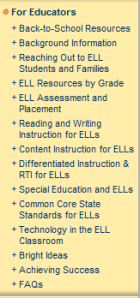Why? you ask.
Simply put, intelligence does not always equal job skill. As an employer, I would look for much more than simply a good GPA (though that certainly doesn't hurt). Here are a few things I would value as an employer that I speak to when I write recommendation letters for students:
- Responsibility. Do you turn assignments in done well and on time? Do you come to class consistently? Personally, I think responsibility accounts for about 70% of a person's success. Your chances at success will be severely limited if you're brilliant but can't get out of bed. In the same vein, if you are a person of average intelligence but work diligently, it's likely that you'll go a long way.
- Respect. I'd argue that this is also called "Professionalism" in the 'adult world'. Treating people you secretly find 'crazy' with kindness and diplomacy is part of developing positive relationships in the professional world. Start practicing this with your classmates and professors.
- Teachability. Young professionals who know everything usually annoy most people around them. While I believe youth offer great value and freshness to their professions through their energy and passion, it's also important to recognize that you have much to learn from people with more experience doing what you want to do. Ask questions than you express opinions. Listen more than you speak. Consider how your actions might be perceived by people around you. While I certainly hope I'm not the first person to break this news, you are not the center of the universe. Let your attitude toward others reflect that you understand that fundamental reality of life.
- Communication. Occasionally, I have had students caught in difficult life circumstances. When they communicate with me about these situations with timeliness, respect, and responsibility, it makes it very easy for me to be flexible and helpful with their needs. Communicating well through difficult times also shows a level of maturity that I would value as an employer. Another way to communicate well in class is to ask for clarification when needed. It's important to assure that you understand what I'm looking for in an assignment, and a great way to do this is to ask me about it when you need more clarity.
- Participation. While I know students *think* the prof doesn't see them sleeping, texting, daydreaming, or snickering it's more than likely that we do, and that we do make a mental note to ourselves for future reference. The strongest recommendations I write are for those students who actively and appropriately participated in class. To me, this indicates that a student is likely to become a committed and astute employee.
Remember, what you do in class now influences who you will be in the professional world tomorrow. I know it feels years away, but you are building your career now, even as a student. Practicing the skills above will enable you to enjoy a long, fruitful and fulfilling career.



















